We were recently asked “Why are people so excited about hand-made tiles from Morocco?”. We actually thought that was such a terrific question it has inspired this blog.
As many of you know we have become New Zealand’s exclusive supplier of Tiles of Ezra handmade Zellige tiles. From the earliest social media posts in which we shared this news, there has been a tremendous groundswell of excitement. But for many people, the level of excitement has been a little perplexing. So, let’s explain why hand-made tiles from Morocco, in particular Tiles of Ezra tiles, being stocked in NZ, is cause for celebration.
MOROCCO – THE HOME OF THE ZELLIGE TILE
Zellige is an Arabic word meaning ‘little polished stone’. Zellige tiles are handmade glazed tiles with irregular surfaces that originated in Morocco. Historically zellige tiles were used to create mosaics with elaborate geometric patterns, however contemporary zellige tiles also includes simple square and rectangular shapes. (whytile.com)
Zellige tiles first appeared sometime in the 10th Century, in Morocco and the Iberian Peninsula (Spain and Portugal). It is believed that these first evolved as a local interpretation of decorative Greco-Roman mosaics. The area had been conquered by muslim people from Northwest Africa known as the Moors, around around AD711. Over time the area developed its own unique Moorish tile known as zellige. (whytile.com)
Within muslim teachings, living creatures cannot be depicted in artwork, and so these early tile artisans expressed themselves through complex geometrical patterns where every colour, shape and pattern had symbolism and meaning – the zellige mosaic. The original zellige tiles were only made in white and brown, but eventually incorporated a wide variety of colours, as their use became a representation of wealth and status. By the 14th Century zellige tiles were used as decorative coverings for tombs, baths, fountains, patios and almost every kind of architecture. (whytile.com)
Upon European explorers arriving in Morocco during the Age of Discovery, (mid-15th to mid 16th Century), they inevitably collected examples of these mosaics and took the Moroccan zellige tiles around the world. They were subsequently replicated by many cultures, even as far away as Latin America.
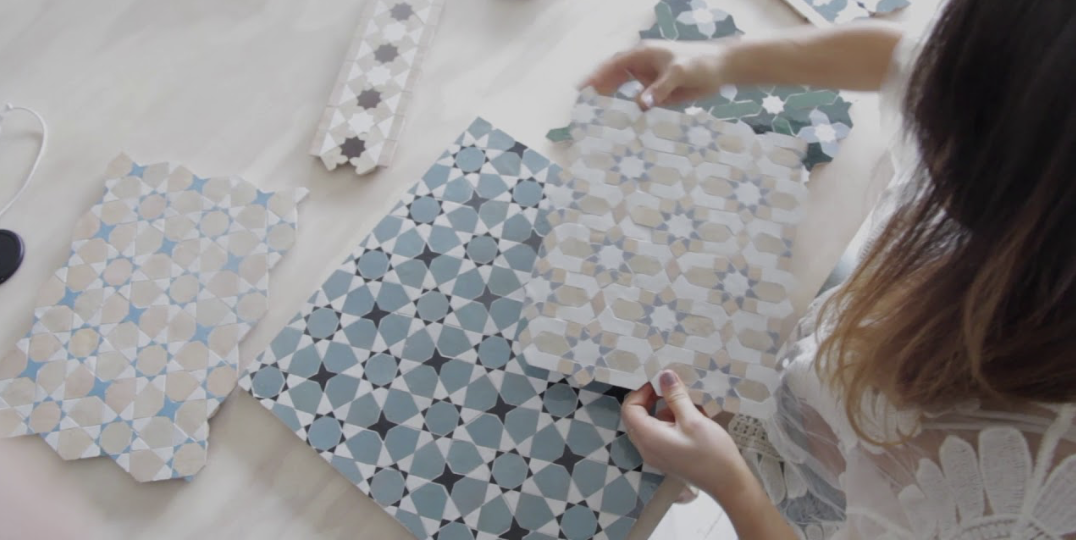
Image Source: Tiles of Ezra
THE METHOD OF MANUFACTURE HAS NOT CHANGED FOR CENTURIES
Traditional zellige tile manufacture is considered an artform that requires great experience, precision, and patience by master craftsman. The techniques are passed down through the generations, with training often beginning in early childhood, using methods of manufacture that have essentially remained the same for hundreds of years.
Traditional Moroccan tiles are made from a very unique clay sourced from the region of Fez. This clay is collected, kneaded with water, molded by hand and pre-dried naturally in the sun in a rectangular or square mold. A lot of time is spent flattening the clay by hand and removing any air bubbles. They are then hand glazed and fired in a wood-fired kiln. A master craftsman then cuts or chisels the tiles by hand into very precise shapes to create complex mosaic pieces.
Zellige mosaics are made by assembling the cut tile pieces upside down which are then covered with plaster or epoxy, so they form a whole piece.
Being hand-made every tile is unique. Part of the character and appeal of zellige tiles is their variations in tone, shine, depth of glazing, thickness, shape and size, surface textures and other irregularities. It is this variation and “imperfection” that is intrinsically hand-made and an important aspect of their character, authenticity, and appeal.

Artisans at work, pounding air bubbles out of clay, and installing dried tiles in kiln. Images from tilesofezra.com
Cutting shapes from baked tiles. Image Source: thekidsshouldseethis.com
TIME TESTED
Hand-made Moroccan tiles, like most ceramic tiles, are remarkably resilient. Some of the oldest known zellige tiled walls are found in the Alhambra Palace in Spain and are over 800 years old, and still in phenomenal condition. Zellige tiles are widely used on a range of surfaces around the world, but not all zellige tiles are created equal and not all tiles described as zellige are in fact authentic. With Tiles of Ezra zellige, you are getting authentic, extremely high quality and durable zellige tiles.
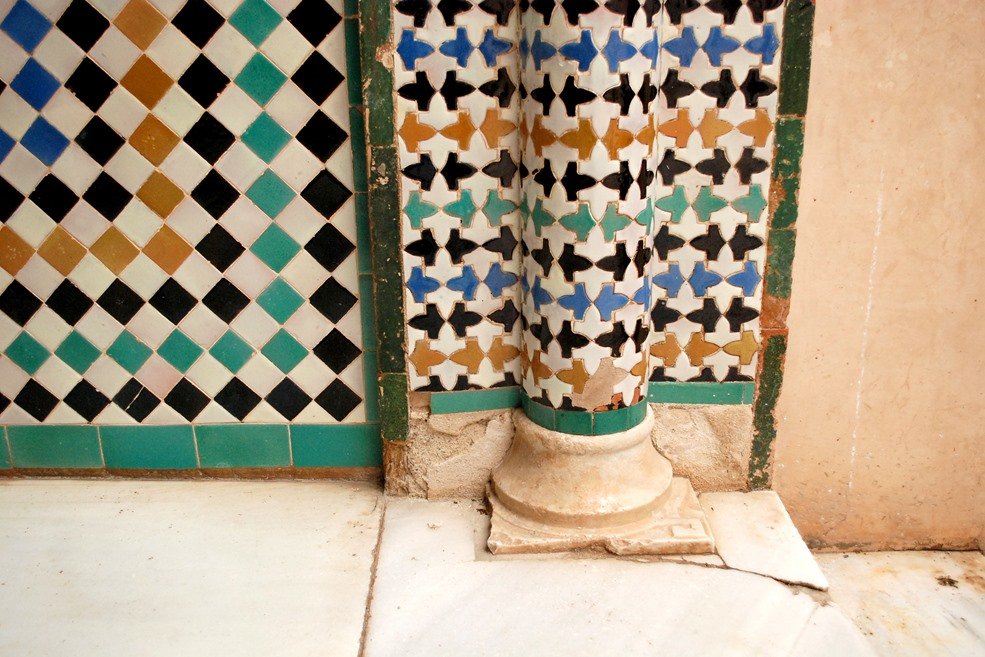
Zellige Tiles in Ahlambra Palace, Spain. Image Source: alhambradegranada.org
ECOLOGICALLY SUSTAINABLE
Being hand made with natural materials, zellige tiles have very low ecological impact. There is some impact from the firing of wood stoked kilns and a carbon footprint involved with the shipping to New Zealand. Find out how the Tile Depot is trying to make our carbon footprint smaller here: https://www.tiledepot.co.nz/walk-the-talk
Their organic hand-made form and low ecological impact all adds to their appeal, particularly as decision making based on the sustainability of products and the creation of healthy interiors becomes increasingly important.

Using the sunlight to dry the moulds prior to glazing and firing. Image source: artzellige.com
EXPERIENTIAL
There is something about authentic handmade zellige tiles and all their quirks and imperfections that speaks to the heart of those who enter a space where they have been used. They create environments that take you away from the hustle and bustle of the world outside, almost like transportation to another place. There is a definite sense of calm and tranquility where the simple zellige are used, and uplifting energy where the more ornate mosaics are used. Both have a positive effect on mood and wellbeing that is truly experiential.
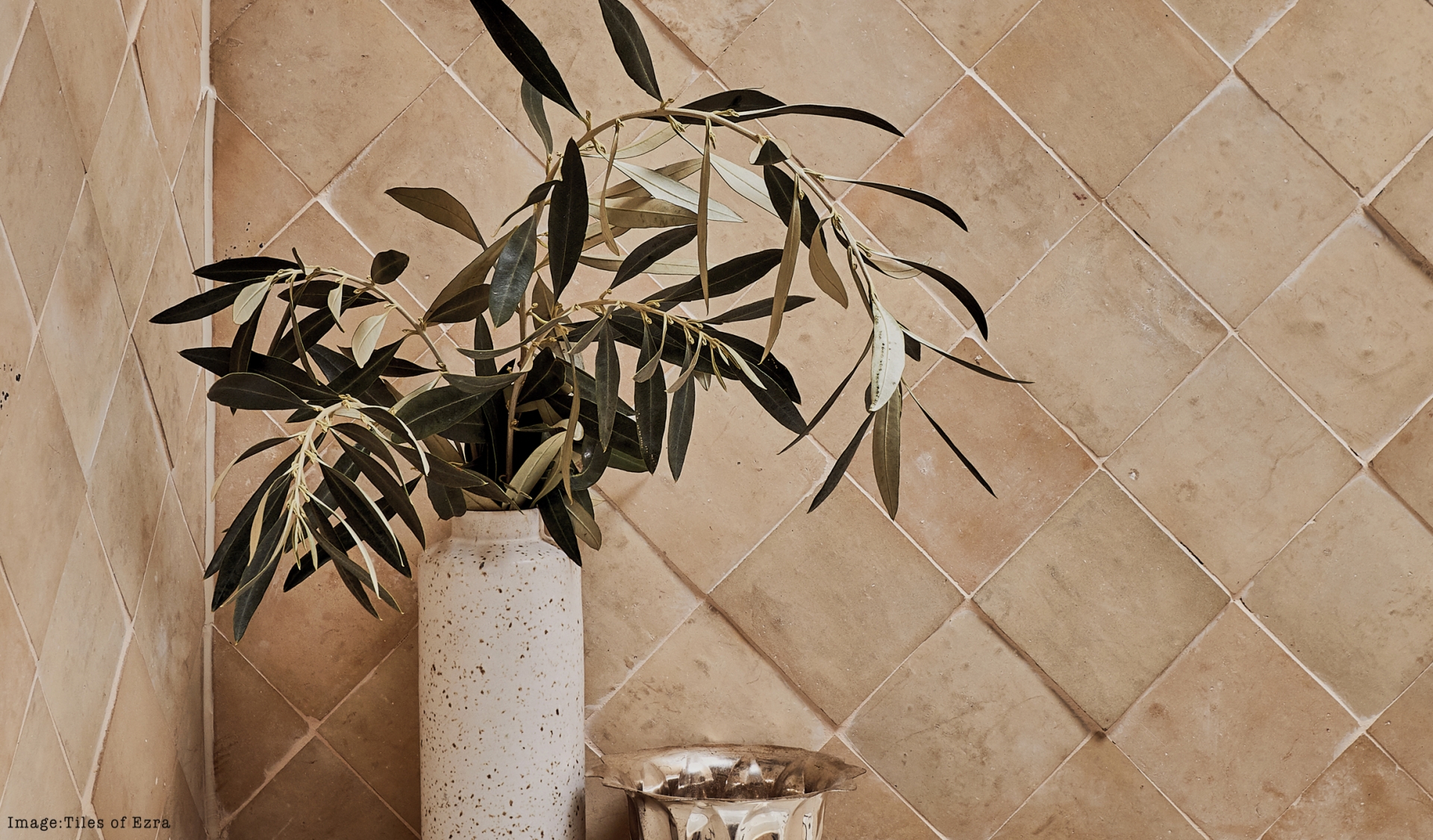
TILES OF EZRA
Tiles of Ezra consider their zellige tiles to be the best in Morocco. There is a direct partnership with the artisans in Morocco who are phenomenally proud of their craft. There is no sweat shop mass production here, but a small group of master craftsman maintaining an ancient artform with love and skill. Supporting Tiles of Ezra helps to keep this craft alive and introduces a piece of Moroccan history into your home.
Georgia Ezra of Tiles of Ezra works closely with these artisans to develop glazing colours that speak to contemporary design and is regularly developing new aesthetics with these traditional tiles. This, in conjunction with their reputation for exceptional quality, has led to Tiles of Ezra zellige tiles being widely sought after for modern interiors.
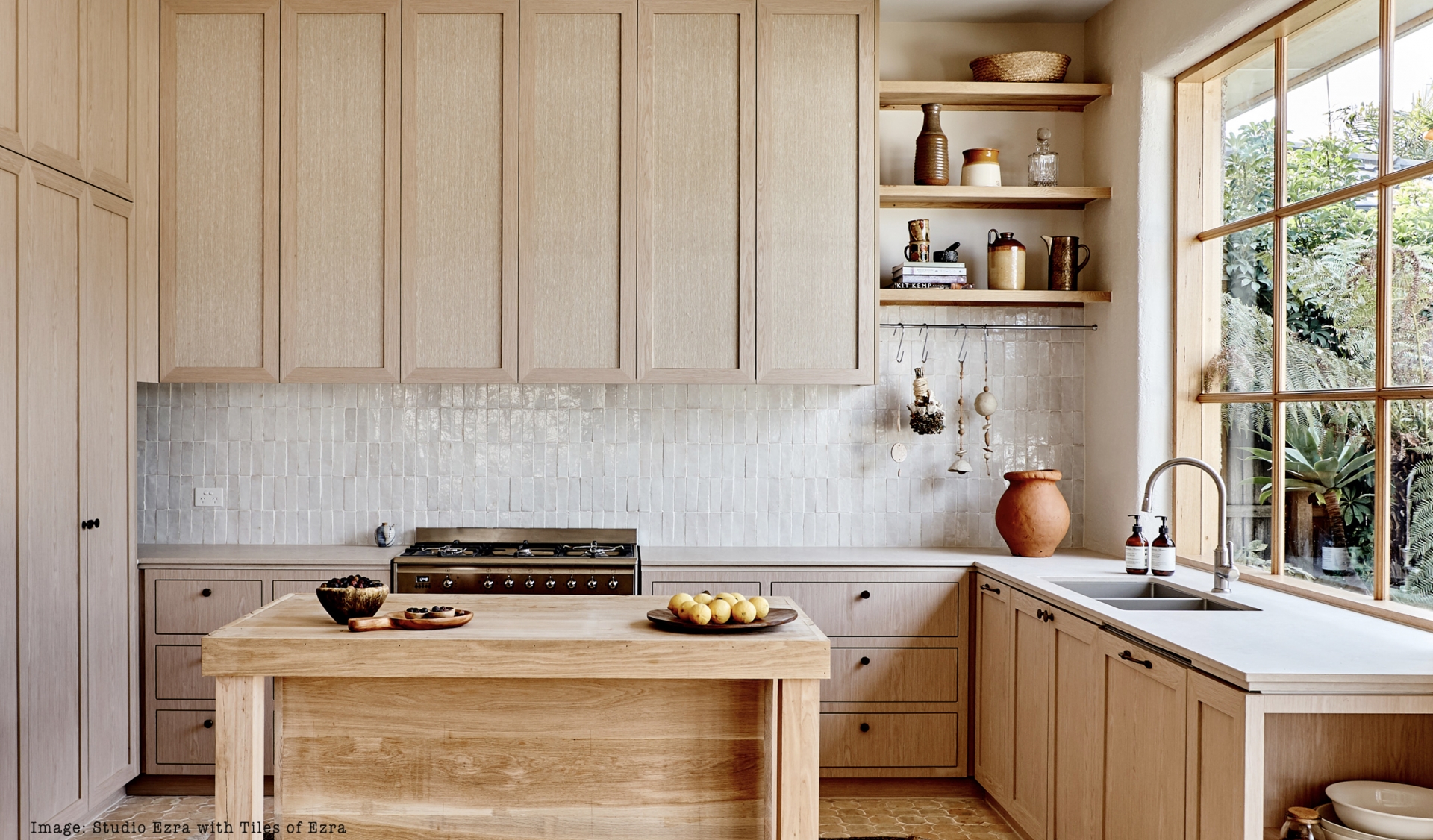
TO BE STOCKED IN NEW ZEALAND
To have the Tiles of Ezra zellige tiles stocked in New Zealand at the Tile Depot is a cause for celebration. As shipping becomes increasingly delayed and unpredictable, having a locally available supply will mean a delay of days as opposed to many months to access stock.
The collection of zellige tiles to be stocked by The Tile Depot are the basic square and rectangular (bejmat) formats. The following is a selection of some of the stocked designs.
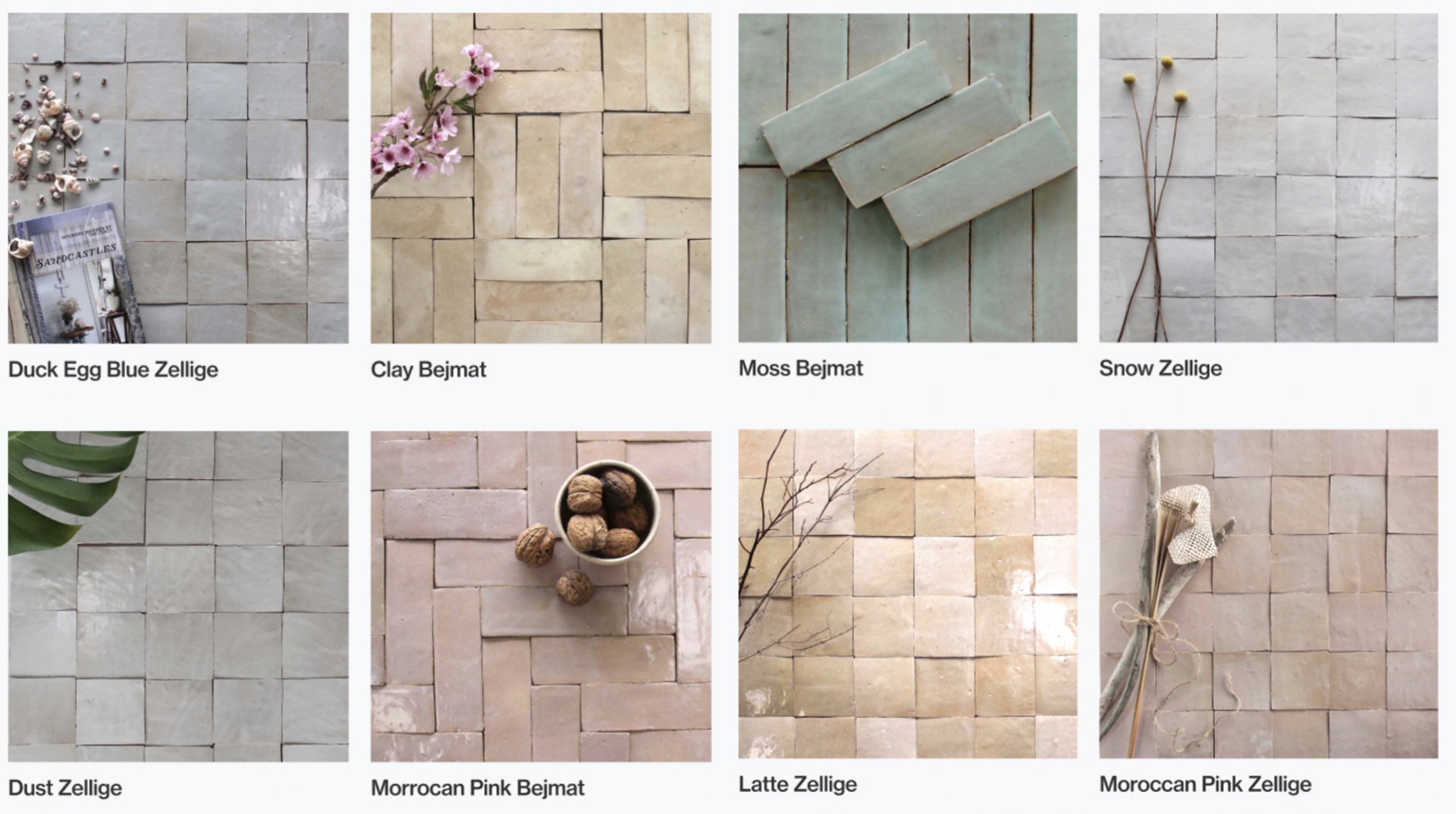
SUMMARY
With New Zealand being such a young nation, we do not have access to such an ancient locally made craft. The Tiles of Ezra zellige are authentic, sustainable, beautiful and experiential – they create a unique atmosphere that is very different to mass produced “perfect” factory tiles. There’s nothing quite like it, although handmade tiles can be found around the world and the look is replicated elsewhere, Tiles of Ezra Moroccan Zellige tiles are of the highest quality and incredibly special.
The Tile Depot is very thrilled to add this product to our range and we can’t wait to see some amazing spaces created locally with these tiles.
References:
whytile.com>tilehistory


